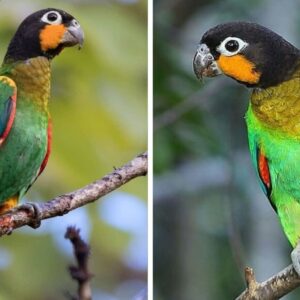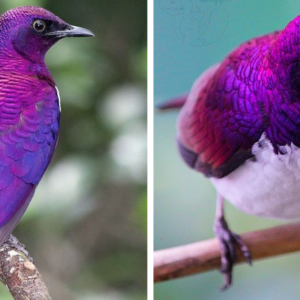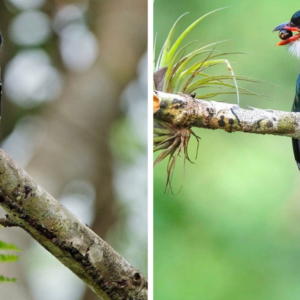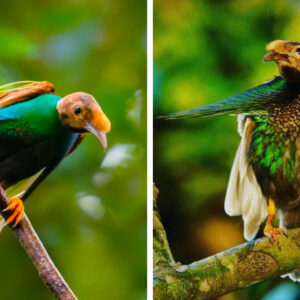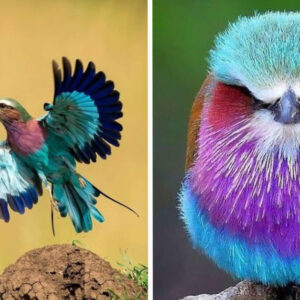The Violet-Backed Starling is truly a stunning bird. With its vibrant violet iridescence – this is not one to be missed!
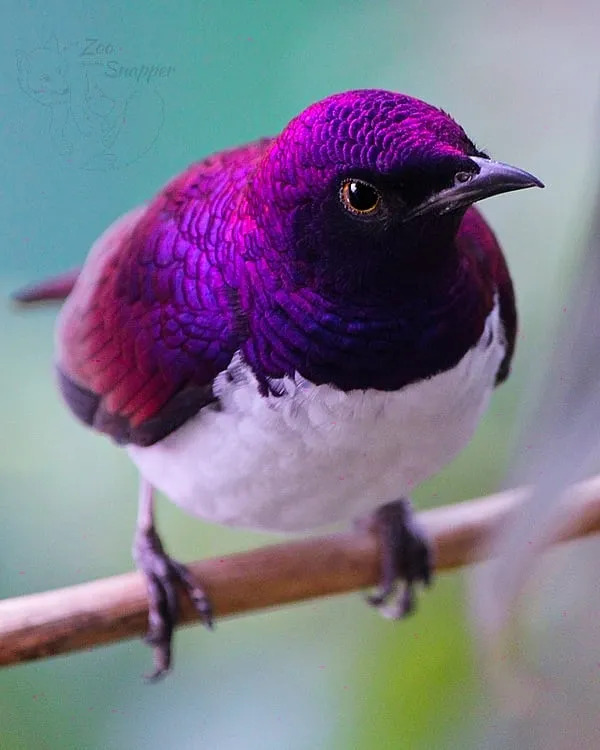
This bird is relatively small (six inches, and weighing around an ounce). Only the male has a white breast and the striking iridescent violet back that characterizes the species.
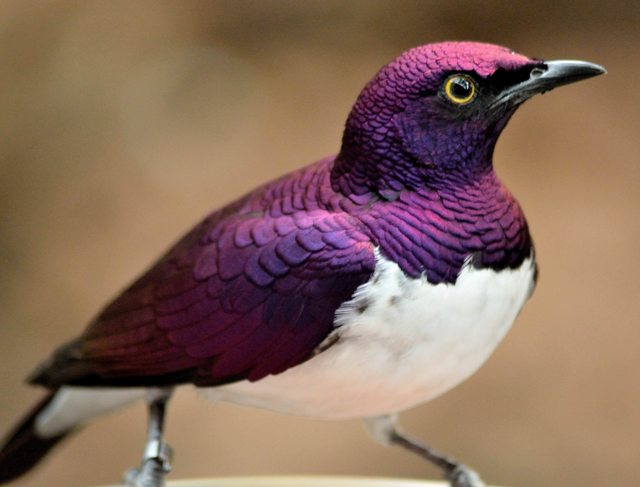
The Violet-Backed Starling species can be found throughout much of Sub-Saharan African
They prefer to stay away from the dense rainforest of the Congo Basin.
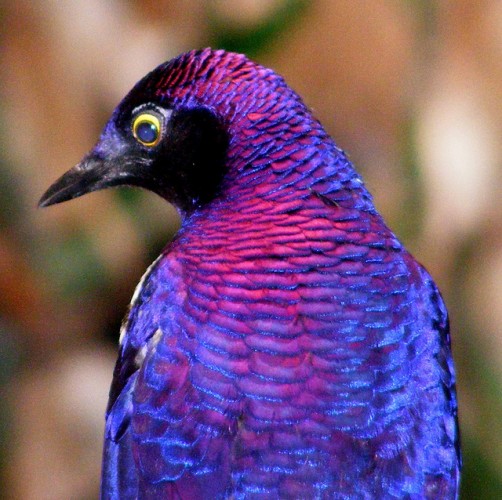
They are commonly seen in forests and forest verges, or in open woodland and clearings. Violet-backed starling feeds predominantly on seeds, fruits, berries, and arthropods, mainly in the tree canopy.
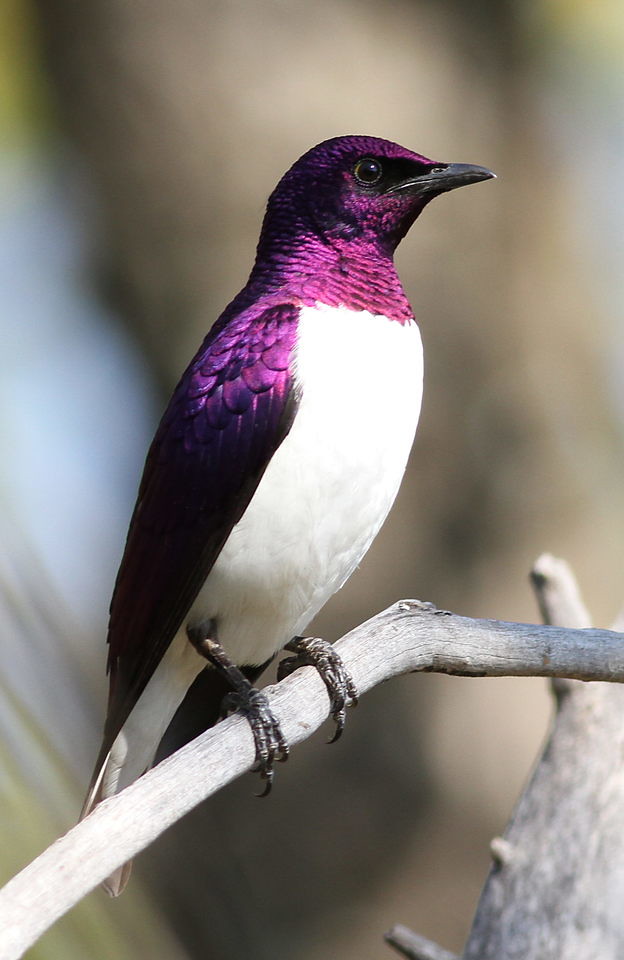
A Violet-Backed Starling is mainly a migratory bird, although some areas do have resident birds.
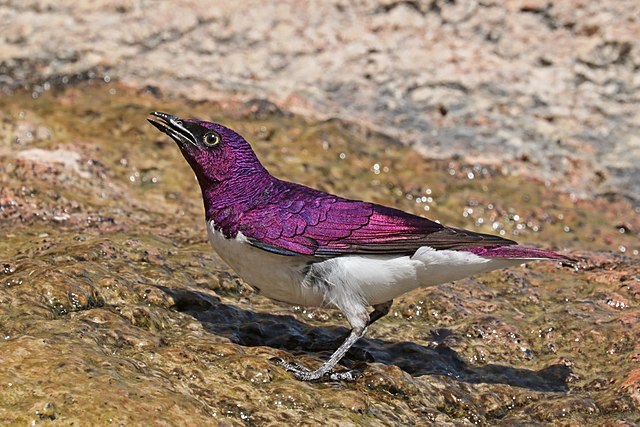
A female will often build her nest two meters off the ground – usually in the fork of a tree. This nest is usually made out of green leaves and animal dung.
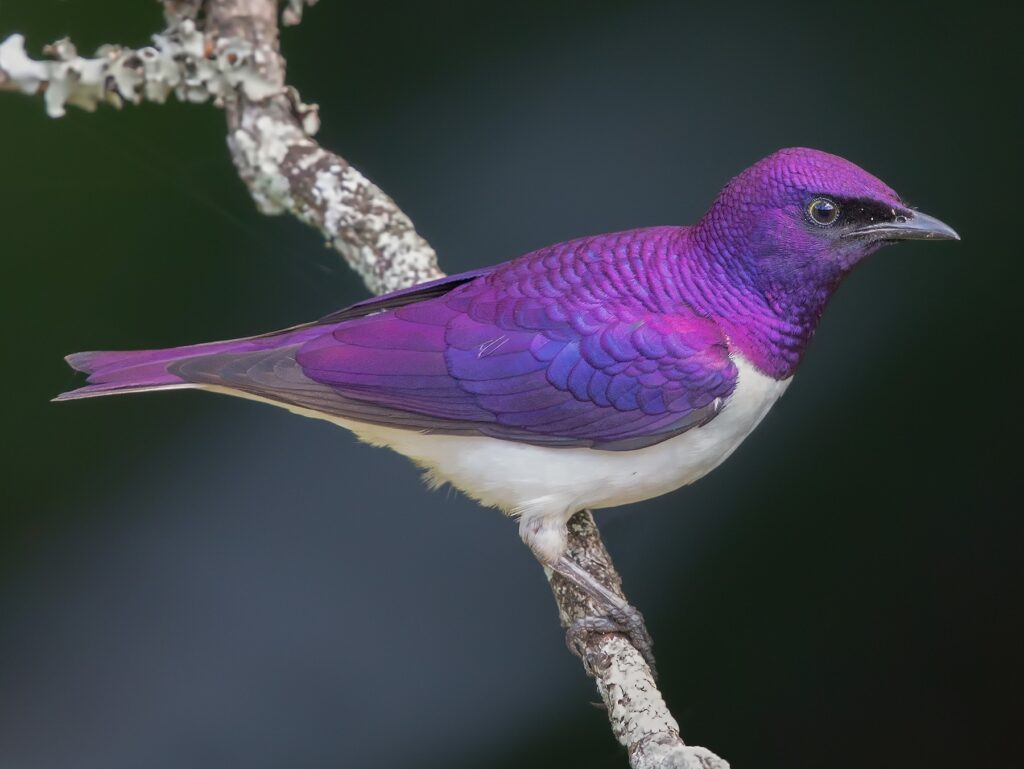
She then incubates a clutch of two to four eggs, blue with reddish/brown spots, for 12-14 days.

Thankfully, she is not left to do all the work with her babies, as the male will also help feed the chicks until they are fully fledged at about 21 days old.
In nature, colouring patterns are a key element for sexual selection. Meaning the colouration of species plays a role in inter and intraspecific communication.
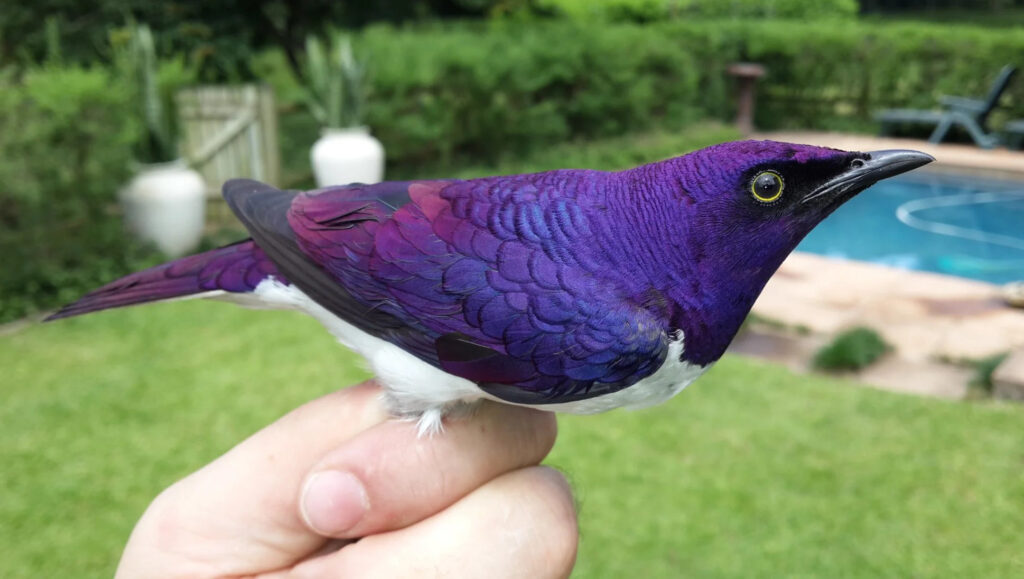
Both sexes of this species could not look any more polar-opposite if they tried!
The male wears his violet-toned suit with pride; the female tends to blend into her environment – making her a lot harder to spot.
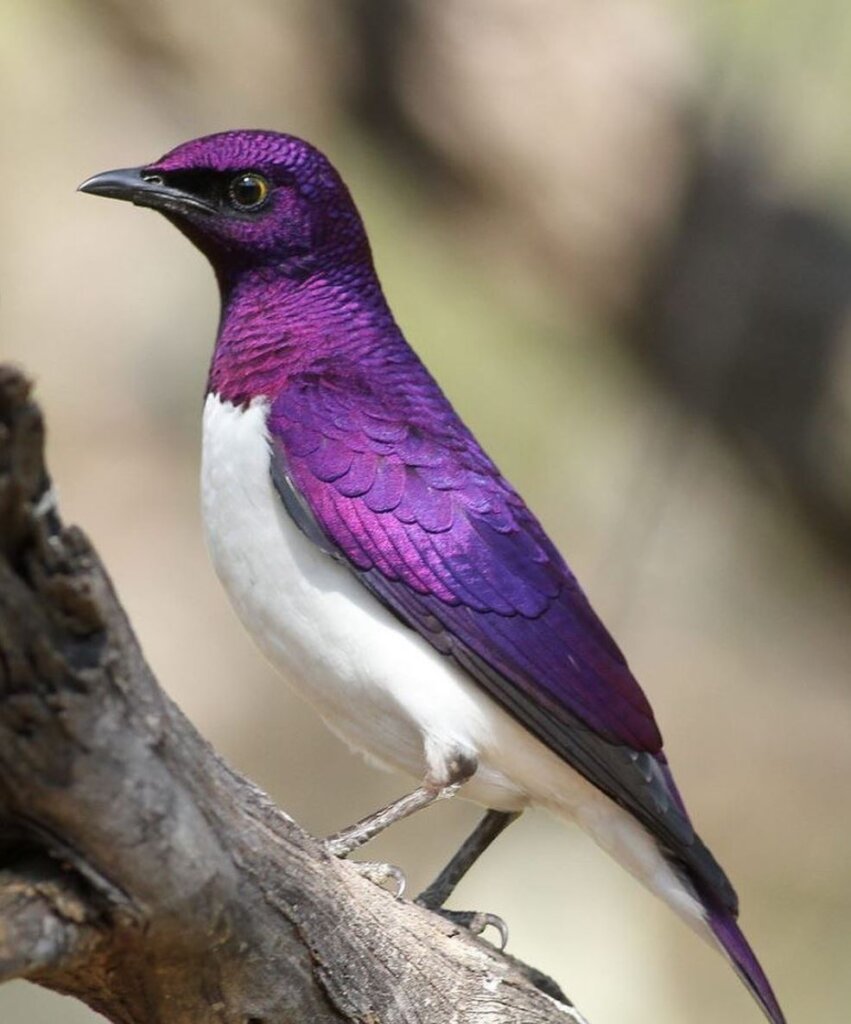
The male’s violet back contrasts nicely with his white belly. Whilst the female’s (and youngsters) of the species have brown and white streaked bellies. They look more similar to a thrush.
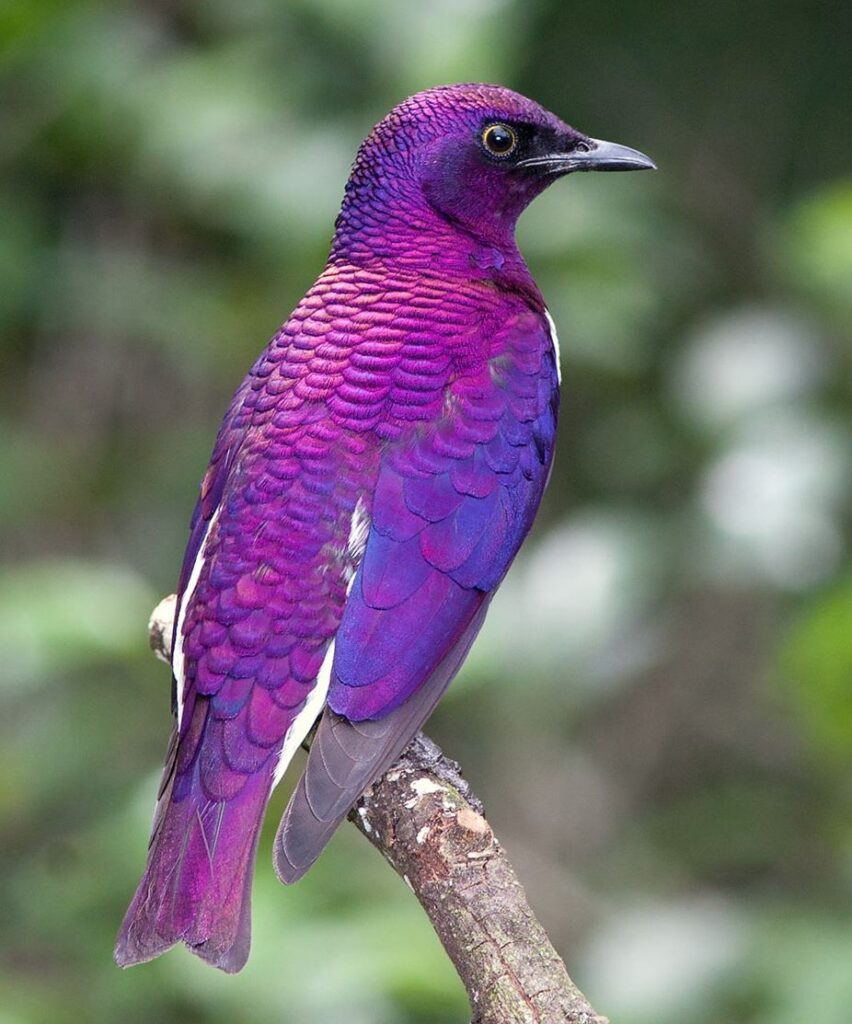
All, however, share the distinctive dark bill and yellow eyes.
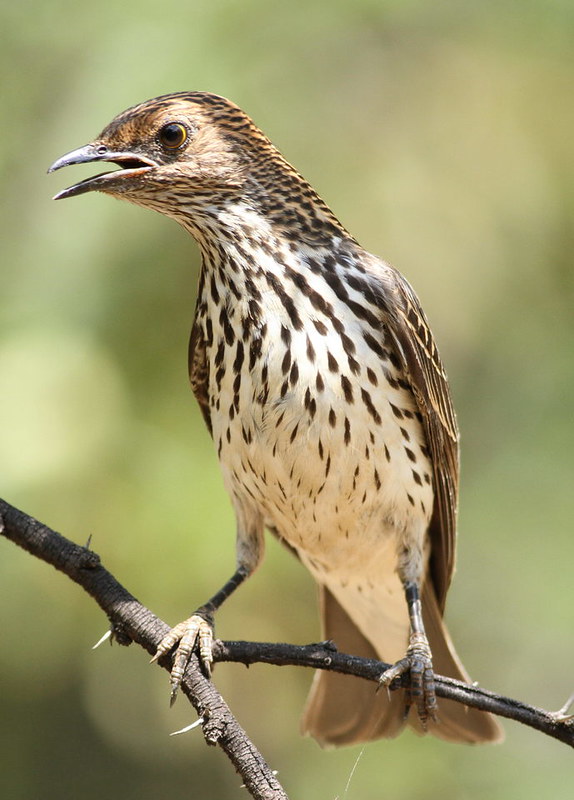
Females and young birds have a brown head and back, with a white belly with brown spots. Both males and females have black beaks and legs – a lot more subtle in colour and deminer than the male Starling.
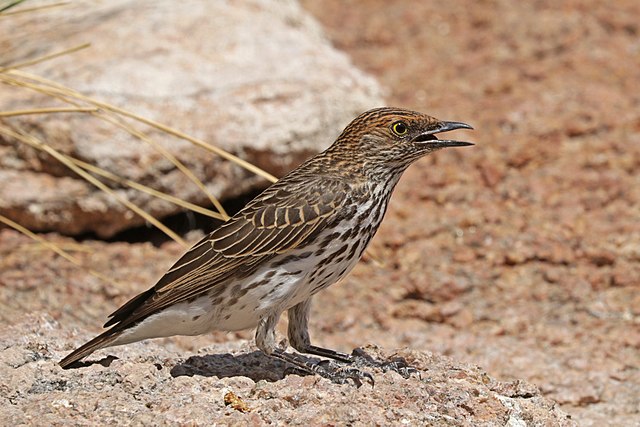
Listen to the birds charming chirps below:
